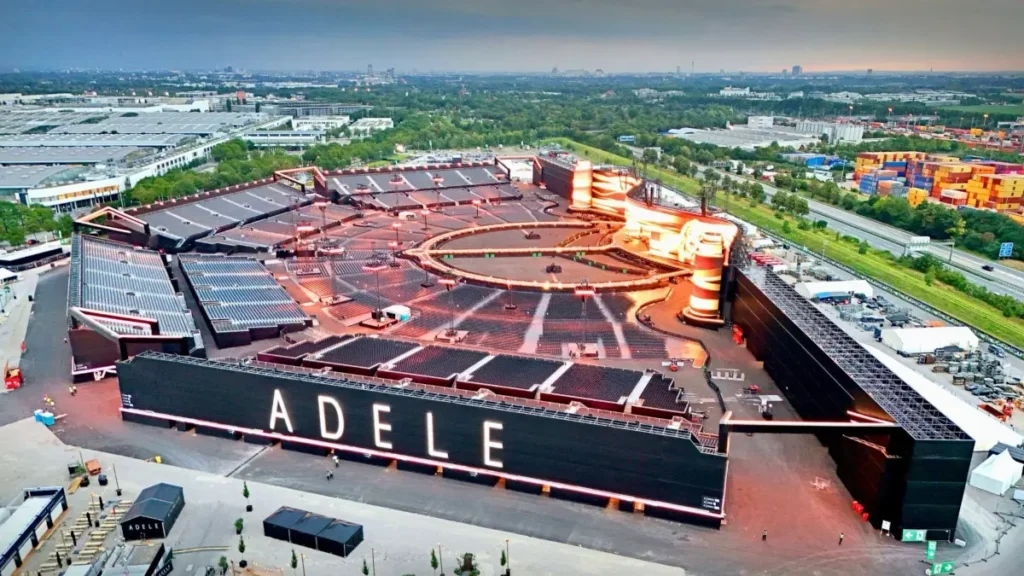Adele’s latest European residency in Munich may have wrapped up, but the impact of her groundbreaking R2.3 billion pop-up stadium is set to resonate far beyond the city limits. This revolutionary, portable stadium—a first of its kind—has captured global attention for its innovative design and ambitious concept, potentially reshaping how live music tours are conducted.
A New Era of Touring: The Portable Pop-Up Stadium
The idea of a portable stadium might have seemed like a far-off dream, but Adele’s residency in Munich turned this concept into a reality. Drawing inspiration from the ABBA Voyage arena in East London, this state-of-the-art venue was designed with mobility in mind, allowing it to be dismantled, transported, and reassembled in new locations around the world. This moveable venue brings live performances closer to fans, regardless of geography.
Constructed in mere weeks, this stadium represents a significant departure from traditional touring methods, which rely heavily on permanent venues. According to reports from The Guardian, this innovative approach could reduce the costs and logistical challenges associated with extensive tours, making it possible for artists to reach more fans in more places.
Future Prospects: More Than Just an Adele Exclusive
While this stadium was purpose-built for Adele’s residency, its potential future uses are vast. Industry insiders suggest that other superstars, such as Beyoncé or Taylor Swift, could leverage this technology for their tours in the future. As reported by The Sun, what could have been a costly one-off structure is now poised to serve multiple artists, offering a new level of flexibility in live performances.
The Costs and Challenges of Innovation
However, this cutting-edge concept has not come without its challenges. Fans who attended the Munich shows had mixed reactions, particularly concerning the high ticket prices, which reached up to R8,000. Some felt they did not get their money’s worth, with many voicing frustrations over obstructed views and poor seating arrangements.
One fan shared online, “I paid R7,300 and couldn’t see anything. My friend, who paid R1,400 for a seat in the back, had a much better view. It was infuriating.” This sentiment was echoed by many attendees, who took to social media to express their dissatisfaction with the seating and sightlines.
Accessibility Issues and Fan Feedback
The logistical hurdles extended beyond just seating issues. Nina Frenchy, a concertgoer in a wheelchair, described the experience as the “worst” of her life. Navigating through large stones outside the stadium and the lack of post-show transportation options for disabled individuals highlighted significant oversights in the venue’s planning. These challenges sparked concerns among fans about the practicalities of such a portable venue.
The Future of Live Music?
Despite the teething problems, Adele’s Munich residency and the debut of the world’s first portable stadium mark a significant moment in the live music industry. The concept of a mobile, reusable venue could redefine the future of touring, offering artists new ways to connect with fans globally. Yet, as Adele’s Munich residency demonstrated, innovation often comes with growing pains.
As Adele returns to Las Vegas to conclude her residency, the music world will be watching closely to see where this portable stadium pops up next. Whether it will become a new standard in concert touring or a unique experiment remains to be seen. However, one thing is clear: Adele’s R2.3 billion pop-up stadium has already made history.
